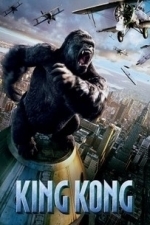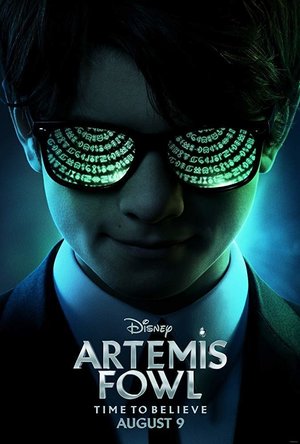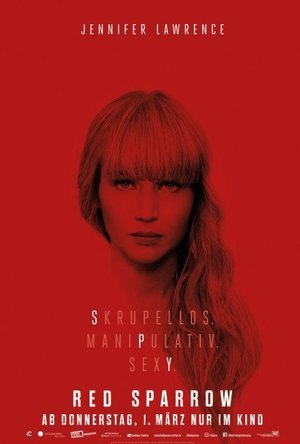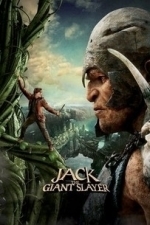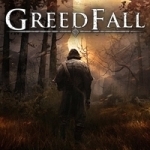Search

PhotoGrid - Pic & Video Editor
Photo & Video and Lifestyle
App
A must-have free photo editor app for photography fanatics and Instagram users! It's packed with...

AppTools 100 in 1
Finance and Utilities
App
BEST deal ever! ONE HUNDRED top QUALITY tools for a very low price! **** For a limited time ****...
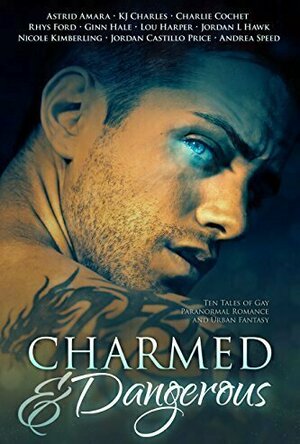
Charmed & Dangerous
Book
Magic takes many forms. From malignant hexes to love charms gone amok, you’ll find a vast array of...
Urban Fantasy Paranormal MM Romance
Gareth von Kallenbach (980 KP) rated King Kong (2005) in Movies
Aug 14, 2019
Following up the box office and Oscar success of the Lord of the Rings Trilogy is an undertaking that is sure to have its dangers. Expectations of the fans notwithstanding, the ability to recapture the magic of the trilogy could be akin to capturing lightning in a bottle. When it was announced that Peter Jackson would follow his Oscar success by doing yet another adaptation of King Kong, there were plenty of questions amidst the excitement.
When an earlier remake was a critical and commercial bomb, “Would Jackson be able to do justice to one of the all time classics?” was one of the biggest questions. When it was announced that comedian Jack Black would be in the film, people began to wonder what Jackson had brewing. Black, as well as Academy Award winner Adrian Brody were seen as offbeat choices. As the release date for the film neared, so did speculation over the look of the film, the running time, and its decision to follow the screenplay of the original rather than adapt to a modern setting.
The film follows a filmmaker named Carl Denham (Jack Black), who in an act of desperation flees New York for a mysterious and uncharted island in an attempt to finish his latest movie before the studio can shut him down. Amidst the backdrop of the Great Depression, it is clear that Denham knows that failure now could be the end of his livelihood and his long term future. As he embarks on his fly by night production, Denham encounters Ann Darrow (Naomi Watts), a recently unemployed Vaudeville performer who is enticed into the film in the hopes of meeting its writer Jack Driscoll (Adrian Brody). It seems that Ann has long coveted a part in Driscoll’s plays and hopes that by meeting him, she will obtain her long sought after audition.
With the cops and studio hot on their heels, the cast and crew board a tramp steamer named “The Venture” as they set off for the mysterious island that is known only to Denham via a mysterious map he obtained through methods unknown.
As the voyage unwinds, not only does Denham get the chance to film segments of the film, but Ann and a stranded Jack find themselves becoming an item. Jack is inspired by Ann, and he works like a man inspired turning out page after page of material for various projects which he hopes Ann will star.
Eventually the ship finds its way to the mysterious Skull Island surrounded in fog, and the crew venture ashore to take in the bizarre and exotic land that has previously been unexplored. Upon finding a fortified wall and settlement the crew has a run in with some dangerous natives which in turn leads to Ann being kidnapped and offered up sacrificial style to a gigantic creature the Islanders refer to as Kong. Undaunted, Jack and the crew set off to rescue Ann while Denham shoots footage along the way, as the island offers visuals the likes of which have never been seen by mankind.
Along the way, the crew encounters deadly creatures and obstacles at every turn, as does Ann who plays a dangerous game of cat and mouse with Kong as she comes to grips with her situation. Kong is taken with the lovely Ann and protects her against numerous dangers including a pack of Tyrannosauruses in one of the film’s best action sequences.
Of course few will be surprised at the final act of the film so I will leave it to say that the fish out of water nature of the previous versions remains intact as Kong finds himself dealing with an urban jungle which leads to a spectacular finale atop the Empire State Building.
In many ways Jackson’s film is three separate films. The first hour of the film is an interesting and, at times witty, character piece where the lead characters assemble. The look of the city is amazing, making it very clear that enormous amounts of effort went into crafting the look of Depression Era New York, and to remind the audience that Prohibition was also in effect. The interplay between the characters is decent.Black does standout work as the slick Denham, as does Watts as the wholesome and lovable Ann.
The second hour of the film is the special effects showcase where the mysteries of Skull Island and Kong are shown complete with all manner of CGI creatures and action sequences. While most of them are well staged, I could not help but note that on more than one occasion the CGI backdrops did not match up well with their live action counterparts. There is one scene of a stampede where it looked like the actors had been drawn in and that they were running in place as they clearly did not mesh with the spectacle behind them.
Throughout the film this occurrence happened more and more which really had me wondering if the effects house was overtaxed. A film with a budget reportedly over 100 million should not have these technical issues. Thankfully Kong himself is a wonder, with everything from his expressive eyes and facial features, captured in a remarkable way. It is just a shame that the other effects did not get the same treatment as the films namesake, as he truly is a site to behold. Andy Serkis who did the character mannerisms for the animators program did a phenomenal job. The movements of Kong progress with a strength and agility that bellies a simian rather than a skilled performer.
I do not want it to sound as if I did not enjoy the film, as much of the film worked very well, technical issues aside. What my biggest issue with the film was that at over 3 Hours, it was far too long for the material to support. We get numerous scenes of Ann and Kong flirting, bonding, fighting, running, and more. What is cute the first couple of times becomes dull the more it is repeated. It is obvious that they have a bond; we do not need to see it over and over ad nauseum to get the message. Also, the character development and interplay between the characters that was so effective in the first part of the film all but vanishes amidst the effects.
The finale of the film is a rousing success as the daring visuals and camera angles are very inventive and thrilling. This segment with its fury of motion and sound will have viewers on the edge of their seat as it certainly delivers the goods. The biggest issue again is having to sit through three hours to get to it. Anyone who has seen either version of Kong knows exactly where the film is heading, and after two hours of screen time I found myself wishing they would just hurry up and get to it.
Jackson has crafted a very entertaining and lavish film that packs its share of thrills. What the film needed is someone to reign in Jackson and his boundless enthusiasm for the project to remind him that sometimes less is more. Jackson has said that he had over 4 hours worth of material filmed but trimmed it down to its current running time. When the film is almost twice the running time of the original, I found myself thinking that minus 45 minutes the same story could have been told.
Despite the flaws and the hype, King Kong is a solid film that for me was more satisfying in many ways than any of the “Rings” films. While not quite a masterpiece, this Kong is worthy of the name and pedigree of the timeless original that inspired it.
When an earlier remake was a critical and commercial bomb, “Would Jackson be able to do justice to one of the all time classics?” was one of the biggest questions. When it was announced that comedian Jack Black would be in the film, people began to wonder what Jackson had brewing. Black, as well as Academy Award winner Adrian Brody were seen as offbeat choices. As the release date for the film neared, so did speculation over the look of the film, the running time, and its decision to follow the screenplay of the original rather than adapt to a modern setting.
The film follows a filmmaker named Carl Denham (Jack Black), who in an act of desperation flees New York for a mysterious and uncharted island in an attempt to finish his latest movie before the studio can shut him down. Amidst the backdrop of the Great Depression, it is clear that Denham knows that failure now could be the end of his livelihood and his long term future. As he embarks on his fly by night production, Denham encounters Ann Darrow (Naomi Watts), a recently unemployed Vaudeville performer who is enticed into the film in the hopes of meeting its writer Jack Driscoll (Adrian Brody). It seems that Ann has long coveted a part in Driscoll’s plays and hopes that by meeting him, she will obtain her long sought after audition.
With the cops and studio hot on their heels, the cast and crew board a tramp steamer named “The Venture” as they set off for the mysterious island that is known only to Denham via a mysterious map he obtained through methods unknown.
As the voyage unwinds, not only does Denham get the chance to film segments of the film, but Ann and a stranded Jack find themselves becoming an item. Jack is inspired by Ann, and he works like a man inspired turning out page after page of material for various projects which he hopes Ann will star.
Eventually the ship finds its way to the mysterious Skull Island surrounded in fog, and the crew venture ashore to take in the bizarre and exotic land that has previously been unexplored. Upon finding a fortified wall and settlement the crew has a run in with some dangerous natives which in turn leads to Ann being kidnapped and offered up sacrificial style to a gigantic creature the Islanders refer to as Kong. Undaunted, Jack and the crew set off to rescue Ann while Denham shoots footage along the way, as the island offers visuals the likes of which have never been seen by mankind.
Along the way, the crew encounters deadly creatures and obstacles at every turn, as does Ann who plays a dangerous game of cat and mouse with Kong as she comes to grips with her situation. Kong is taken with the lovely Ann and protects her against numerous dangers including a pack of Tyrannosauruses in one of the film’s best action sequences.
Of course few will be surprised at the final act of the film so I will leave it to say that the fish out of water nature of the previous versions remains intact as Kong finds himself dealing with an urban jungle which leads to a spectacular finale atop the Empire State Building.
In many ways Jackson’s film is three separate films. The first hour of the film is an interesting and, at times witty, character piece where the lead characters assemble. The look of the city is amazing, making it very clear that enormous amounts of effort went into crafting the look of Depression Era New York, and to remind the audience that Prohibition was also in effect. The interplay between the characters is decent.Black does standout work as the slick Denham, as does Watts as the wholesome and lovable Ann.
The second hour of the film is the special effects showcase where the mysteries of Skull Island and Kong are shown complete with all manner of CGI creatures and action sequences. While most of them are well staged, I could not help but note that on more than one occasion the CGI backdrops did not match up well with their live action counterparts. There is one scene of a stampede where it looked like the actors had been drawn in and that they were running in place as they clearly did not mesh with the spectacle behind them.
Throughout the film this occurrence happened more and more which really had me wondering if the effects house was overtaxed. A film with a budget reportedly over 100 million should not have these technical issues. Thankfully Kong himself is a wonder, with everything from his expressive eyes and facial features, captured in a remarkable way. It is just a shame that the other effects did not get the same treatment as the films namesake, as he truly is a site to behold. Andy Serkis who did the character mannerisms for the animators program did a phenomenal job. The movements of Kong progress with a strength and agility that bellies a simian rather than a skilled performer.
I do not want it to sound as if I did not enjoy the film, as much of the film worked very well, technical issues aside. What my biggest issue with the film was that at over 3 Hours, it was far too long for the material to support. We get numerous scenes of Ann and Kong flirting, bonding, fighting, running, and more. What is cute the first couple of times becomes dull the more it is repeated. It is obvious that they have a bond; we do not need to see it over and over ad nauseum to get the message. Also, the character development and interplay between the characters that was so effective in the first part of the film all but vanishes amidst the effects.
The finale of the film is a rousing success as the daring visuals and camera angles are very inventive and thrilling. This segment with its fury of motion and sound will have viewers on the edge of their seat as it certainly delivers the goods. The biggest issue again is having to sit through three hours to get to it. Anyone who has seen either version of Kong knows exactly where the film is heading, and after two hours of screen time I found myself wishing they would just hurry up and get to it.
Jackson has crafted a very entertaining and lavish film that packs its share of thrills. What the film needed is someone to reign in Jackson and his boundless enthusiasm for the project to remind him that sometimes less is more. Jackson has said that he had over 4 hours worth of material filmed but trimmed it down to its current running time. When the film is almost twice the running time of the original, I found myself thinking that minus 45 minutes the same story could have been told.
Despite the flaws and the hype, King Kong is a solid film that for me was more satisfying in many ways than any of the “Rings” films. While not quite a masterpiece, this Kong is worthy of the name and pedigree of the timeless original that inspired it.
Tyler Fletcher (8 KP) rated Artemis Fowl (2020) in Movies
Jun 14, 2020
Character development (1 more)
Forgettable story
Another Live-Action Disney Adaption Bomb
Contains spoilers, click to show
What is it about fantasy novels that makes them so difficult to translate effectively to the silver screen? It’s not impossible – J.K. Rowling’s Harry Potter series and Peter Jackson’s The Lord of the Rings adaptations are proof that it can be done. More often than not, however, the result is as limp and truncated as Kenneth Branagh’s Artemis Fowl – a few standout moments set adrift in a sea of underdeveloped characters, incomplete backstory elements, and abbreviated world building. Although the problem lies primarily in the difficulties associated with condensing an epic tale into a short-ish movie, the lack of elegance with which that is accomplished makes Artemis Fowl a failure for anyone hoping for the next great fantasy film.
The treatment accorded to Artemis Fowl (the movie condenses elements from the first two volumes of an eight-novel cycle into a single film) recalls a Disney misfire from more than three decades ago. Although The Black Cauldron was animated, it suffered from many of the same problems evident in Artemis Fowl: an oversimplification of the backstory, a rushed narrative with poorly realized characters, and a overall lack of faithfulness to the source material. The Black Cauldron worked better because it at least had a clean ending. Artemis Fowl suffers by trying to both provide a credible stopping point (in case there are no additional films) and offering a lead-in to additional adventures (in case there are additional films).
In the books, 12-year old Artemis (played by Ferdia Shaw, the grandson of Robert Shaw) is presented as an anti-hero (although, over the course of the saga, his villainous attributes fade to be replaced by heroic ones). Here, he’s more of a misunderstood boy-genius whose role as the protagonist is never in question. All of his edges have been smoothed out. The story focuses on Artemis’ efforts to locate and rescue his father, Artemis Fowl Sr. (Colin Farrell), an infamous art thief who has been kidnapped by the twisted evil fairy Opal Koboi. Her ransom for releasing him is that Artemis must locate and obtain a powerful McGuffin. He is joined in his efforts by Lower Elements Police (LEP) fairy police officer Holly Short (Lara McDonnell), giant dwarf Mulch Diggums (Josh Gad), and strongman Domovoi Butler (Nonso Anozie).
Artemis Fowl diverges considerably from the two books that form its basis, Artemis Fowl and Artemis Fowl and the Arctic Incident. Although author Eoin Colfer reportedly “approved” the changes, they push the film into an alternate universe from the one occupied by the novels. Even with the pruning of subplots and condensation of the narrative, 100 minutes is too short to tell the story effectively. None of the characters are well-developed, including Artemis. The boy’s relationship with Holly Short evolves with whiplash-inducing rapidity – one moment, they’re enemies (actually, she’s his prisoner), the next they’re friends. The film’s frenetic pace might work for ADD viewers and preteens but there’s no time for world-building or anything more than the most basic exposition. As a result, Artemis Fowl feels rushed to the point of being exhausting and strangely confusing despite the relatively straightforward storyline.
Kenneth Branagh was undoubtedly selected to direct the film based on his success with two earlier Disney properties: the live-action Cinderella and Marvel’s Thor. Perhaps because Branagh had no input into the screenplay (which was completed before he came on board), the movie lacks the complex psychological qualities he normally brings to his films. Visually, Artemis Fowl is impressive. However, although the fairy world of Haven is beautifully rendered, it appears all-too-briefly. The film’s most impressive sequence, a throwdown with a seemingly invincible troll, is a standout by any definition, but it represents only about five minutes of screen time and there’s nothing else that comes close – not even the muted climax.
As is often the case, Branagh’s presence at the top results in some impressive names in the cast. The young leads are newcomers – this is Ferdia Shaw’s first movie (and it shows – his performance is occasionally wooden) and Lara McDonnell’s third (she’s better, evidencing an indomitable pluckiness) – but the rest of the cast is populated with veterans. Josh Gad, another Disney regular, has the most openly comedic role of the film as Mulch Diggums. Colin Farrell is called on for limited duty as Artemis’ mostly-absent father. Nonso Anozie, who has a history with Branagh, plays Artemis’ protector and advisor. Finally, Judi Dench adds a dose of class as Holly’s no-nonsense boss.
It has taken Artemis Fowl nearly 20 years to traverse the route from page to screen and one senses that neither fans nor newcomers will be especially pleased with the end result. Recognizing that the film faced rough seas, Disney postponed the movie’s originally planned August 2019 release to May 2020 then, when the coronavirus made that impossible, the studio elected to shift the film to its Disney+ platform. Although partially a face-saving gesture (Artemis Fowl would likely have had a similar box office reception to Disney’s underwhelming 2018 release, The Nutcracker and the Four Realms), it at least allows the film to find a large audience in a low-pressure situation.
The bottom line seems to be that, while Disney has shown an aptitude for making many different kinds of movies, fantasy epics aren’t among them. This is one genre the Magic Kingdom should perhaps avoid, leaving such properties to studios that have shown better success (such as Warner Brothers). Artemis Fowl could have been the beginning of a movie franchise but, based on the first installment, it’s more likely a one-and-done outing. Disney can't quite get away from the John Carters can they?
THIS FILM IS AN EXCEPTIONAL BOMB
The treatment accorded to Artemis Fowl (the movie condenses elements from the first two volumes of an eight-novel cycle into a single film) recalls a Disney misfire from more than three decades ago. Although The Black Cauldron was animated, it suffered from many of the same problems evident in Artemis Fowl: an oversimplification of the backstory, a rushed narrative with poorly realized characters, and a overall lack of faithfulness to the source material. The Black Cauldron worked better because it at least had a clean ending. Artemis Fowl suffers by trying to both provide a credible stopping point (in case there are no additional films) and offering a lead-in to additional adventures (in case there are additional films).
In the books, 12-year old Artemis (played by Ferdia Shaw, the grandson of Robert Shaw) is presented as an anti-hero (although, over the course of the saga, his villainous attributes fade to be replaced by heroic ones). Here, he’s more of a misunderstood boy-genius whose role as the protagonist is never in question. All of his edges have been smoothed out. The story focuses on Artemis’ efforts to locate and rescue his father, Artemis Fowl Sr. (Colin Farrell), an infamous art thief who has been kidnapped by the twisted evil fairy Opal Koboi. Her ransom for releasing him is that Artemis must locate and obtain a powerful McGuffin. He is joined in his efforts by Lower Elements Police (LEP) fairy police officer Holly Short (Lara McDonnell), giant dwarf Mulch Diggums (Josh Gad), and strongman Domovoi Butler (Nonso Anozie).
Artemis Fowl diverges considerably from the two books that form its basis, Artemis Fowl and Artemis Fowl and the Arctic Incident. Although author Eoin Colfer reportedly “approved” the changes, they push the film into an alternate universe from the one occupied by the novels. Even with the pruning of subplots and condensation of the narrative, 100 minutes is too short to tell the story effectively. None of the characters are well-developed, including Artemis. The boy’s relationship with Holly Short evolves with whiplash-inducing rapidity – one moment, they’re enemies (actually, she’s his prisoner), the next they’re friends. The film’s frenetic pace might work for ADD viewers and preteens but there’s no time for world-building or anything more than the most basic exposition. As a result, Artemis Fowl feels rushed to the point of being exhausting and strangely confusing despite the relatively straightforward storyline.
Kenneth Branagh was undoubtedly selected to direct the film based on his success with two earlier Disney properties: the live-action Cinderella and Marvel’s Thor. Perhaps because Branagh had no input into the screenplay (which was completed before he came on board), the movie lacks the complex psychological qualities he normally brings to his films. Visually, Artemis Fowl is impressive. However, although the fairy world of Haven is beautifully rendered, it appears all-too-briefly. The film’s most impressive sequence, a throwdown with a seemingly invincible troll, is a standout by any definition, but it represents only about five minutes of screen time and there’s nothing else that comes close – not even the muted climax.
As is often the case, Branagh’s presence at the top results in some impressive names in the cast. The young leads are newcomers – this is Ferdia Shaw’s first movie (and it shows – his performance is occasionally wooden) and Lara McDonnell’s third (she’s better, evidencing an indomitable pluckiness) – but the rest of the cast is populated with veterans. Josh Gad, another Disney regular, has the most openly comedic role of the film as Mulch Diggums. Colin Farrell is called on for limited duty as Artemis’ mostly-absent father. Nonso Anozie, who has a history with Branagh, plays Artemis’ protector and advisor. Finally, Judi Dench adds a dose of class as Holly’s no-nonsense boss.
It has taken Artemis Fowl nearly 20 years to traverse the route from page to screen and one senses that neither fans nor newcomers will be especially pleased with the end result. Recognizing that the film faced rough seas, Disney postponed the movie’s originally planned August 2019 release to May 2020 then, when the coronavirus made that impossible, the studio elected to shift the film to its Disney+ platform. Although partially a face-saving gesture (Artemis Fowl would likely have had a similar box office reception to Disney’s underwhelming 2018 release, The Nutcracker and the Four Realms), it at least allows the film to find a large audience in a low-pressure situation.
The bottom line seems to be that, while Disney has shown an aptitude for making many different kinds of movies, fantasy epics aren’t among them. This is one genre the Magic Kingdom should perhaps avoid, leaving such properties to studios that have shown better success (such as Warner Brothers). Artemis Fowl could have been the beginning of a movie franchise but, based on the first installment, it’s more likely a one-and-done outing. Disney can't quite get away from the John Carters can they?
THIS FILM IS AN EXCEPTIONAL BOMB
Movie Metropolis (309 KP) rated Red Sparrow (2018) in Movies
Jun 10, 2019
Never entertaining, frequently repugnant
Director Francis Lawrence and Hollywood sweetheart Jennifer Lawrence (they are no relation, I’ve checked) aren’t a new combination when it comes to film-making.
In fact, Francis Lawrence may have kick-started the world’s love affair with the young actress after he directed her in the best Hunger Games movie, Catching Fire.
They both went on to finish the saga with Mockingjay’s two instalments and the rest as they say, is box office magic.
Here though, they both take on a very different project, aimed at a very different group of movie fans. Red Sparrow is the first hard-hitting thriller of 2018. But is it any different from the plethora of films already out there in the genre?
Prima ballerina Dominika Egorova (Jennifer Lawrence) faces a bleak and uncertain future after she suffers an injury that ends her career. She soon turns to Sparrow School, a secret intelligence service that trains exceptional young people to use their minds and bodies as weapons. Egorova emerges as the most dangerous Sparrow after completing the sadistic training process. As she comes to terms with her new abilities, Dominika meets Joel Edgerton’s CIA agent Nate Nash (yes really) who tries to convince her that he is the only person she can trust.
The film starts off very promisingly as the audience are treated to a beautifully choreographed opening that follows Lawrence at the height of her dancing fame and Edgerton as he goes about an assignment. Both characters don’t intertwine at this point, and as the music builds to a crescendo we realise both their nights are about to go very wrong. It’s nicely filmed, if a little Black Swan–esque. Unfortunately, this impressive crescendo signals something else, the start of a downhill slope for Red Sparrow.
For a film marketed as a classy, adults-only thriller, Red Sparrow has very little in the way of class, despite the inclusion of Jennifer Lawrence. Her acting, as usual is sublime, minus her at times dreadful Russian accent and the rest of the cast do their best with Edgerton coming across well, but the rest of the film is just such a mess. Jeremy Irons feels incredibly miscast as a Russian General and the script by Justin Haythe is borderline incomprehensible.
The overuse of graphic violence and sex really does it no favours. There’s only so many times you can watch Lawrence be raped without wondering what the hell the film-makers thought they were doing and one (thankfully consensual) sex scene will have your eyes rolling in the back of your head: not out of pleasure, but out of absurdity.
It really begs the question: why did Lawrence pick such a bizarre choice of role in the first place?
Then there’s the action, or lack thereof. Where films like Atomic Blonde stylised the violence and the action to create a particular aesthetic, Red Sparrow just doesn’t. The limited amount of action that is presented to the audience is lazily filmed and worlds apart from director Francis Lawrence’s excellent work on the Hunger Games series.
Sure, the sets are lavish and the globetrotting that Lawrence gets to do is pleasant enough, but we’ve seen it all before and done much, much better. The production has a very staid quality that isn’t befitting of its director and its leading lady.
The final act twists that piece together everything that has come before is 30 minutes too late. At 140 minutes long, Red Sparrow is an absolute behemoth of a film but there is no reason whatsoever for it to be this long. Had it been thrilling and entertaining it could have gotten away with it – unfortunately it drags continuously from beginning to end.
Overall, Red Sparrow is a real dud that even the talents of Jennifer Lawrence can’t save. Not only is it never entertaining and frequently repugnant, it really begs the question: why did Lawrence pick such a bizarre choice of role in the first place? If it’s to escape her Katniss Everdeen persona she’s succeeded, but this could make movie studios think twice about casting her in projects in the future.
https://moviemetropolis.net/2018/03/07/red-sparrow-review-never-entertaining-frequently-repugnant/
In fact, Francis Lawrence may have kick-started the world’s love affair with the young actress after he directed her in the best Hunger Games movie, Catching Fire.
They both went on to finish the saga with Mockingjay’s two instalments and the rest as they say, is box office magic.
Here though, they both take on a very different project, aimed at a very different group of movie fans. Red Sparrow is the first hard-hitting thriller of 2018. But is it any different from the plethora of films already out there in the genre?
Prima ballerina Dominika Egorova (Jennifer Lawrence) faces a bleak and uncertain future after she suffers an injury that ends her career. She soon turns to Sparrow School, a secret intelligence service that trains exceptional young people to use their minds and bodies as weapons. Egorova emerges as the most dangerous Sparrow after completing the sadistic training process. As she comes to terms with her new abilities, Dominika meets Joel Edgerton’s CIA agent Nate Nash (yes really) who tries to convince her that he is the only person she can trust.
The film starts off very promisingly as the audience are treated to a beautifully choreographed opening that follows Lawrence at the height of her dancing fame and Edgerton as he goes about an assignment. Both characters don’t intertwine at this point, and as the music builds to a crescendo we realise both their nights are about to go very wrong. It’s nicely filmed, if a little Black Swan–esque. Unfortunately, this impressive crescendo signals something else, the start of a downhill slope for Red Sparrow.
For a film marketed as a classy, adults-only thriller, Red Sparrow has very little in the way of class, despite the inclusion of Jennifer Lawrence. Her acting, as usual is sublime, minus her at times dreadful Russian accent and the rest of the cast do their best with Edgerton coming across well, but the rest of the film is just such a mess. Jeremy Irons feels incredibly miscast as a Russian General and the script by Justin Haythe is borderline incomprehensible.
The overuse of graphic violence and sex really does it no favours. There’s only so many times you can watch Lawrence be raped without wondering what the hell the film-makers thought they were doing and one (thankfully consensual) sex scene will have your eyes rolling in the back of your head: not out of pleasure, but out of absurdity.
It really begs the question: why did Lawrence pick such a bizarre choice of role in the first place?
Then there’s the action, or lack thereof. Where films like Atomic Blonde stylised the violence and the action to create a particular aesthetic, Red Sparrow just doesn’t. The limited amount of action that is presented to the audience is lazily filmed and worlds apart from director Francis Lawrence’s excellent work on the Hunger Games series.
Sure, the sets are lavish and the globetrotting that Lawrence gets to do is pleasant enough, but we’ve seen it all before and done much, much better. The production has a very staid quality that isn’t befitting of its director and its leading lady.
The final act twists that piece together everything that has come before is 30 minutes too late. At 140 minutes long, Red Sparrow is an absolute behemoth of a film but there is no reason whatsoever for it to be this long. Had it been thrilling and entertaining it could have gotten away with it – unfortunately it drags continuously from beginning to end.
Overall, Red Sparrow is a real dud that even the talents of Jennifer Lawrence can’t save. Not only is it never entertaining and frequently repugnant, it really begs the question: why did Lawrence pick such a bizarre choice of role in the first place? If it’s to escape her Katniss Everdeen persona she’s succeeded, but this could make movie studios think twice about casting her in projects in the future.
https://moviemetropolis.net/2018/03/07/red-sparrow-review-never-entertaining-frequently-repugnant/
Gareth von Kallenbach (980 KP) rated Jack the Giant Slayer (2013) in Movies
Aug 7, 2019
The timeless children’s tale of Jack and the Beanstalk gets a high-tech update in the new film Jack the Giant Slayer. Directed by Bryan Singer, the new version mixes in special effects with romance, action, and humor to provide a refreshing update of a fairytale that should appeal to adults and children alike. Nicholas Hoult stars as Jack, a simple farmer who’s raised by his uncle after the passing of his father. As a boy, Jack enjoyed the tales of long ago, especially those of the time when giants came down from the sky and attacked the earth before being thwarted by King Eric and his magical crown.
One day while in town to sell a cart and horse and earn much-needed funds for his uncle, Jack has a chance encounter with Princess Isabelle, (Eleanor Tomlinson), which leaves Jack’s starstruck. Unbeknownst to Jack and Isabelle, there is a dastardly plot afoot as the evil Count Roderick (Stanley Tucci), plots to rule the land once he has married Isabelle. The fact that the Princess has no interest in marrying Roderick is of little interest to the King (Ian McShane), as he is anxious to provide continuity for his kingdom following the loss of his wife. While Isabelle pleads her case with her father, Jack ends up in possession of beans which, he’s told, are magical.
Upon seeing what Jack has returned with, his uncle storms off into the night hoping to sell some of Jack’s remaining family possessions in order to make the money Jack had failed to acquire. While alone, Jack again encounters the Princess, who has decided to run away rather than be forced into a marriage she does not want. As if on cue, one of the magic beans that Jack had obtained earlier becomes wet in the rain storm and whisks the cottage and Princess into the heavens high above. The King and his men send a group of guards, under the leadership of Elmont (Ewan McGregor), to ascend the beanstalk and return the Princess. Jack and Roderick also accompany the soldiers, each with their own agenda.
Upon scaling the massive stalk, the group soon discovers that they are in the realm of giants long thought to be the stuff of legends. Complications arise which forces Jack to take command of the very perilous situation and soon finds himself battling not just to save the Princess but also for the very survival of the kingdom and surrounding world.
The film has some nice moments and while the CGI stuff may be a bit childish to some, it is important to remember that this is a fairytale and as such you are not going to see a lot of character depth and intricate plot twists. Instead, the film relies on a very likable cast made up of matinée quality villains and bad guys and some very nice visual effects to convey its simple but effective formula. Hoult follows up his leading role in “Warm Bodies” effectively and with several high-profile projects in the near future, seems poised to be a leading man to keep an eye on. The supporting cast does a very good job, especially McGregor and McShane who bring a gleeful energy to their roles as does Tucci as a villain who has everything short of the twirling mustache and black hat.
The 3-D offered some very good moments in the film and really enhanced some of the battle scenes in the film. Parents with younger children may want to note that there are some elements that may be frightening to very young children but for the most part this is a kid’s film. That being said, I was surprised how much I enjoyed the movie. It’s certainly better than I expected and was, in my opinion, the best live-action retelling of fairytale in recent memory. We did get a chance to review the film in the IMAX format which certainly allowed for the impressive visuals of the film to have an even greater impact. If you’ve ever been a fan of the story then you definitely will want to take a trip up the beanstalk for this nostalgic, yet highly enjoyable, interpretation of the beloved classic.
One day while in town to sell a cart and horse and earn much-needed funds for his uncle, Jack has a chance encounter with Princess Isabelle, (Eleanor Tomlinson), which leaves Jack’s starstruck. Unbeknownst to Jack and Isabelle, there is a dastardly plot afoot as the evil Count Roderick (Stanley Tucci), plots to rule the land once he has married Isabelle. The fact that the Princess has no interest in marrying Roderick is of little interest to the King (Ian McShane), as he is anxious to provide continuity for his kingdom following the loss of his wife. While Isabelle pleads her case with her father, Jack ends up in possession of beans which, he’s told, are magical.
Upon seeing what Jack has returned with, his uncle storms off into the night hoping to sell some of Jack’s remaining family possessions in order to make the money Jack had failed to acquire. While alone, Jack again encounters the Princess, who has decided to run away rather than be forced into a marriage she does not want. As if on cue, one of the magic beans that Jack had obtained earlier becomes wet in the rain storm and whisks the cottage and Princess into the heavens high above. The King and his men send a group of guards, under the leadership of Elmont (Ewan McGregor), to ascend the beanstalk and return the Princess. Jack and Roderick also accompany the soldiers, each with their own agenda.
Upon scaling the massive stalk, the group soon discovers that they are in the realm of giants long thought to be the stuff of legends. Complications arise which forces Jack to take command of the very perilous situation and soon finds himself battling not just to save the Princess but also for the very survival of the kingdom and surrounding world.
The film has some nice moments and while the CGI stuff may be a bit childish to some, it is important to remember that this is a fairytale and as such you are not going to see a lot of character depth and intricate plot twists. Instead, the film relies on a very likable cast made up of matinée quality villains and bad guys and some very nice visual effects to convey its simple but effective formula. Hoult follows up his leading role in “Warm Bodies” effectively and with several high-profile projects in the near future, seems poised to be a leading man to keep an eye on. The supporting cast does a very good job, especially McGregor and McShane who bring a gleeful energy to their roles as does Tucci as a villain who has everything short of the twirling mustache and black hat.
The 3-D offered some very good moments in the film and really enhanced some of the battle scenes in the film. Parents with younger children may want to note that there are some elements that may be frightening to very young children but for the most part this is a kid’s film. That being said, I was surprised how much I enjoyed the movie. It’s certainly better than I expected and was, in my opinion, the best live-action retelling of fairytale in recent memory. We did get a chance to review the film in the IMAX format which certainly allowed for the impressive visuals of the film to have an even greater impact. If you’ve ever been a fan of the story then you definitely will want to take a trip up the beanstalk for this nostalgic, yet highly enjoyable, interpretation of the beloved classic.
Gareth von Kallenbach (980 KP) rated Greedfall in Video Games
Oct 31, 2019
Greedfall the latest action-adventure roleplaying game from the folks at Spider and Focus Home Interactive is set in the far-off land of Teer Fradee where numerous factions vie for dominance over the continent (and its native inhabitants) while searching for an elusive cure for the Malichor, an insidious disease that threatens to wipe out the inhabitants. The story begins in the plague-ridden streets of Serene, where you immediately get a sense of what it must have been like in Europe while the black plague threatened to wipe out entire societies. You play the role of De Sardet, a young noble who sets sail for the new world in an effort to bring back a cure and assist his cousin who has taken over as the newly appointed governor. Using your skills of diplomacy, sword play, and stealth you’ll have to befriend not only the other factions, but the natives if you wish to bring a cure home.
Greedfall is a beautiful game, taking place in large expansive cities reminiscent of Paris or London in the 18th century and the lush forest landscape of Teer Fradee. Each character is costumed in what could only be considered French Musketeer and the island natives’ representative of what early European settlers in North America must have encountered. The sense of scale between the massive cities, and the vast expanse of the frontier provides a sense of openness that rival many other titles.
It’s this sense of openness however, where Greedfall initially stumbles. Much like games such as Dragon Age, the illusion of an open world environment is regularly halted by “invisible” walls that impede your progress. Looking through a small grove of trees you see your objective but are unable to pass through them directly. Instead, you must follow the path and climb a rock ledge to reach it. Several times while attempting to get to my highlighted objective, I’d get stuck on small bushes, or my path stopped by what should be easily passable brush. There are moments where it’s uncertain whether or not I could pass through the environment, so I’d have to refer to my map to see if that was the correct path, or I had to follow some other indirect route to get there. While this game style is hardly new (and had been common in the past until advancements in both computing power and storage space allowed for larger environments) the inconsistencies of what was passable and impassable lead to a bit more frustration then it should.
Combat is quick and easy to pick up with a light and heavy attack and a block or dodge for defense. Each successful attack also builds up your fury meter which allows for stronger strikes against enemy opponents. You and your opponents also benefit from armor and health attributes. Armor can help defend against health damage, but once the armor is depleted there is little standing between you and certain death at the end of a musket or blade. Numerous spells and potions can be used to buff up your character, cause elemental damage or provide quick healing when needed. Besides swords, maces and axes there are also an assortment of pistols and rifles for ranged attack. If you so choose, you can also create magic wielding warriors who can utilize spells and magic rings in combat as well. Various skill points can be added to your offensive and defensive capabilities that allows for stronger strikes, better mobility (unlocking the ability to roll away from danger is something that I highly recommend) and increase the length of spells.
The story and character voice acting is typically top notch, the one glaring exception to this was the accent used by the natives. As much as I hoped I would get used to it, the worse it tended to get. While creating an accent that is supposed to be unique to the people who share it should be applause worthy, it often felt forced and in most cases entirely TOO artificial. The cut scenes that are used throughout to further along the story are outstanding, and while the facial expressions generally left a lot to be desired, it didn’t detract too much from what was being said. The amount of voice acting and cut scenes puts it on par with far larger budget titles and outside of those few gripes feel they are done well overall.
Technically the game tends to suffer from some annoying and immersion breaking problems. While I played the game using a Nvidia GTX 2080 Super, there were times when the frame rates would drop from the typical 80+ on my ultra-wide screen down to 15 or 20. These slowdowns didn’t last long but seemed to come at times I wouldn’t have expected them. In my attempts to isolate them, I tried lowering a number of the graphical settings, but in most cases, it didn’t seem to have much effect. These have improved somewhat with the latest patches to the game, but still exist from time to time. There are also the random crashes to desktop for no reason at all, thankfully the game autosaves frequently enough (and allows you to manually save as often as you wish) that I never lost much progress when these occurred, but it’s something to be aware of. Characters and animals occasionally get stuck on the environment, I one time found myself stuck in a small hole that I should have easily been able to walk out of, and another time a large deer was stuck running in place next to a large rock. While these glitches didn’t cause any serious quest ending problems, they are just additional polish issues that still need to be worked out. As other reviewers have pointed out, there are some issues going from light to dark environments where it seems to take awhile for the lighting to adjust as it should.
Greedfall even with the inconsistent accents and technical difficulties is still an easy game to recommend for folks looking for a change of pace from the standard Dungeons and Dragons tropes. There is plenty of political intrigue and mysteries to unravel on Teer Fradee and no one faction that can be singled out as good or evil. Sacrifices have to be made when dealing with each faction and doing something for one will almost always cause a conflict with another. While the choices you make, do impact how others see you, they aren’t as world changing as they could have been. Greedfall is a long game easily 40+ hours depending on how many side quests you choose to complete on your search for a cure and it tells an interesting enough story to keep you engaged throughout.
What I liked: Interesting factions, Beautiful scenery, Unique setting
What I liked less: Invisible walls, Technical glitches, Inconsistent voice acting
Greedfall is a beautiful game, taking place in large expansive cities reminiscent of Paris or London in the 18th century and the lush forest landscape of Teer Fradee. Each character is costumed in what could only be considered French Musketeer and the island natives’ representative of what early European settlers in North America must have encountered. The sense of scale between the massive cities, and the vast expanse of the frontier provides a sense of openness that rival many other titles.
It’s this sense of openness however, where Greedfall initially stumbles. Much like games such as Dragon Age, the illusion of an open world environment is regularly halted by “invisible” walls that impede your progress. Looking through a small grove of trees you see your objective but are unable to pass through them directly. Instead, you must follow the path and climb a rock ledge to reach it. Several times while attempting to get to my highlighted objective, I’d get stuck on small bushes, or my path stopped by what should be easily passable brush. There are moments where it’s uncertain whether or not I could pass through the environment, so I’d have to refer to my map to see if that was the correct path, or I had to follow some other indirect route to get there. While this game style is hardly new (and had been common in the past until advancements in both computing power and storage space allowed for larger environments) the inconsistencies of what was passable and impassable lead to a bit more frustration then it should.
Combat is quick and easy to pick up with a light and heavy attack and a block or dodge for defense. Each successful attack also builds up your fury meter which allows for stronger strikes against enemy opponents. You and your opponents also benefit from armor and health attributes. Armor can help defend against health damage, but once the armor is depleted there is little standing between you and certain death at the end of a musket or blade. Numerous spells and potions can be used to buff up your character, cause elemental damage or provide quick healing when needed. Besides swords, maces and axes there are also an assortment of pistols and rifles for ranged attack. If you so choose, you can also create magic wielding warriors who can utilize spells and magic rings in combat as well. Various skill points can be added to your offensive and defensive capabilities that allows for stronger strikes, better mobility (unlocking the ability to roll away from danger is something that I highly recommend) and increase the length of spells.
The story and character voice acting is typically top notch, the one glaring exception to this was the accent used by the natives. As much as I hoped I would get used to it, the worse it tended to get. While creating an accent that is supposed to be unique to the people who share it should be applause worthy, it often felt forced and in most cases entirely TOO artificial. The cut scenes that are used throughout to further along the story are outstanding, and while the facial expressions generally left a lot to be desired, it didn’t detract too much from what was being said. The amount of voice acting and cut scenes puts it on par with far larger budget titles and outside of those few gripes feel they are done well overall.
Technically the game tends to suffer from some annoying and immersion breaking problems. While I played the game using a Nvidia GTX 2080 Super, there were times when the frame rates would drop from the typical 80+ on my ultra-wide screen down to 15 or 20. These slowdowns didn’t last long but seemed to come at times I wouldn’t have expected them. In my attempts to isolate them, I tried lowering a number of the graphical settings, but in most cases, it didn’t seem to have much effect. These have improved somewhat with the latest patches to the game, but still exist from time to time. There are also the random crashes to desktop for no reason at all, thankfully the game autosaves frequently enough (and allows you to manually save as often as you wish) that I never lost much progress when these occurred, but it’s something to be aware of. Characters and animals occasionally get stuck on the environment, I one time found myself stuck in a small hole that I should have easily been able to walk out of, and another time a large deer was stuck running in place next to a large rock. While these glitches didn’t cause any serious quest ending problems, they are just additional polish issues that still need to be worked out. As other reviewers have pointed out, there are some issues going from light to dark environments where it seems to take awhile for the lighting to adjust as it should.
Greedfall even with the inconsistent accents and technical difficulties is still an easy game to recommend for folks looking for a change of pace from the standard Dungeons and Dragons tropes. There is plenty of political intrigue and mysteries to unravel on Teer Fradee and no one faction that can be singled out as good or evil. Sacrifices have to be made when dealing with each faction and doing something for one will almost always cause a conflict with another. While the choices you make, do impact how others see you, they aren’t as world changing as they could have been. Greedfall is a long game easily 40+ hours depending on how many side quests you choose to complete on your search for a cure and it tells an interesting enough story to keep you engaged throughout.
What I liked: Interesting factions, Beautiful scenery, Unique setting
What I liked less: Invisible walls, Technical glitches, Inconsistent voice acting


